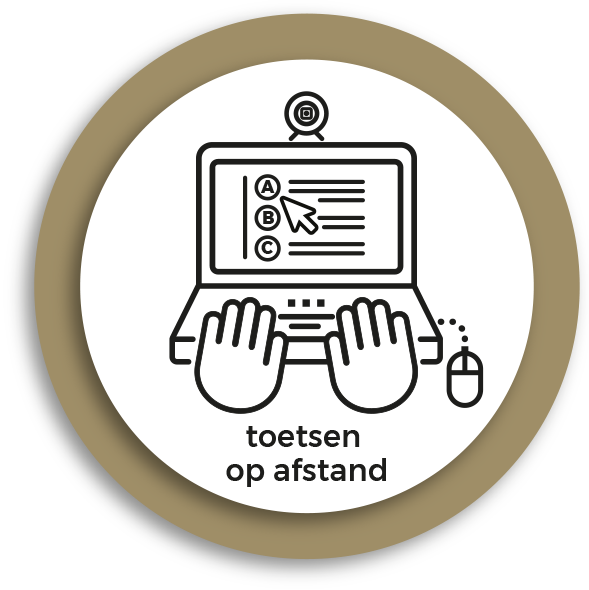Description
Knowledge assessments carried out in a 1-to-1 setting are mainly presentations, oral exams or resits of exams. Taking such assessments remotely can have advantages, such as not having to arrange a room for a single student and costing the student less in terms of time and travel expenses. The risk of fraud is not very high with remote assessment in a 1-to-1 setting.
How
Online proctoring can also be carried out at this scale. Live monitoring is the most obvious option in this case. This means that students are monitored in real time, for example via a webcam or telephone.
Recommended assessment methods
Tips
Set a suitable time limit: too much time increases the risk of cheating, but too little time causes stress and reduces the validity of the exam results. See Van Berkel (1999) (in Dutch) for estimates of the time needed for different types of questions.
Emphasize the student’s ethical responsibility not to cheat.
Ensure good communication with the students.
- Be transparent about the online assessment process, so that students know what to expect. Let them know for example which personal details will be needed and what they will be used for, and what they need to have with them (e.g. a student card, telephone or camera).
- If online proctoring will be used, be clear about what the students can expect and what the rules are. Transparency about how the online proctoring will be implemented is essential. For more information, see the SURF online proctoring report: Surveilleren op afstand.
- You also need to let the students know about any technical requirements. At a minimum, students will need a stable internet connection. It is important to let the students know of any specific computer hardware requirements for the assessment software and to provide alternatives if this is not available.
Not every student has suitable living conditions with a quiet room to take an exam in. Where possible, offer an alternative, such as a room on campus that students can use.

